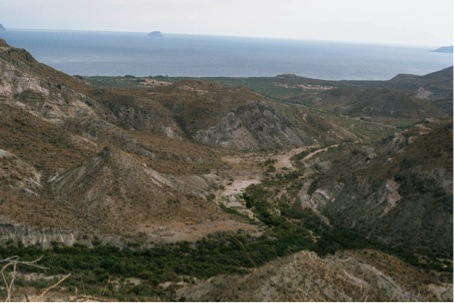By David Kier
www.vivabaja.com
Co-author of ‘The Old Missions of Baja & Alta California, 1697-1834’
The mission of Los Dolores began because of the need for a mission between Loreto and La Paz following the failure of the mission at Ligüí/Malibat. The new mission was also known as ‘Dolores del Sur’ to distinguish it from a visita of the Loreto mission named Dolores, and perhaps later because of a planned new mission, called ‘Dolores del Norte’.
In 1720, Padre Clemente Guillén investigated the site of Apaté along the gulf coast during his overland trip from Malibat to help start the La Paz mission. Guillén found fresh water near the beach at Apaté by digging a shallow well. Guillén also found running water in a canyon, about two miles west of the beach.
On August 2, 1721, with new funds guaranteed by the Marqués de Villapuente, Guillén founded the mission of Nuestra Señora de los Dolores de Apaté. The mission may have first been established close to the beach, but within two years was moved into the canyon. A stone walled church, dam, aqueduct, reservoir, and other mission structures were built there, and ruins of them remain to this day.
In 1734, Padre Guillén wanted to move the mission out of the canyon and go about 15 miles to the southwest for better farmland and easier access to the majority of Guaycura people. The Pericú Indian rebellion at the four southernmost missions (La Paz, Santiago, San José del Cabo and Santa Rosa) interrupted the move until 1741. The new Dolores location had been a visita called ‘La Pasión’, and known locally as Tañuetía (‘The Place of Ducks’) or Chillá. After the move, the Dolores mission was more typically called La Pasión, which has caused some confusion with history writers.
Guaycura neophytes were served by Padre Guillén until 1747 when age and illness forced him to retire to Loreto. Padre Lamberto Hostell replaced Guillén at Los Dolores. The end of the Dolores mission came from a bureaucratic decision rather than a site or population failure. Following the 1767 ordered removal of the Jesuits from their missions, Spain’s Visitador General José de Gálvez ordered the mission closed in September, 1768. The mission’s 450 neophytes were relocated to Todos Santos, which was far outside of their ancestral homeland. This made for very poor relations with both the Guaycura, and Pericú who had lived at Todos Santos.
The Dolores Apaté site is one of Baja California’s most remote and no road goes to it. Boats can take visitors to the beach followed by a hike to the mission, or one makes a longer, steep hike on the mission trail from the west.
The La Pasión (Los Dolores Chillá) site can be driven to in an SUV, on the road to Los Burros from Mexico Highway 1, north of La Paz. It is located just east of Rancho La Presa and shown on some maps as La Capilla. Only rubble from the church remains and a goat ranch was recently reported operating on top of the site.






